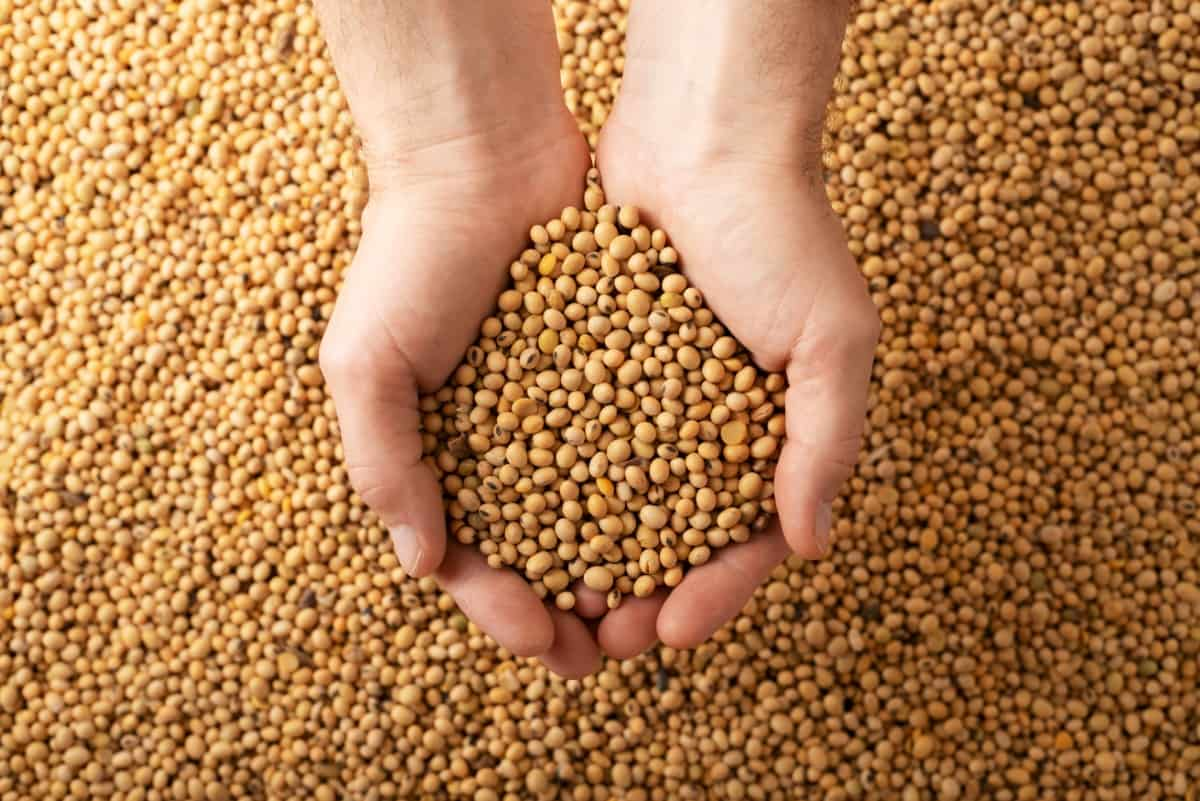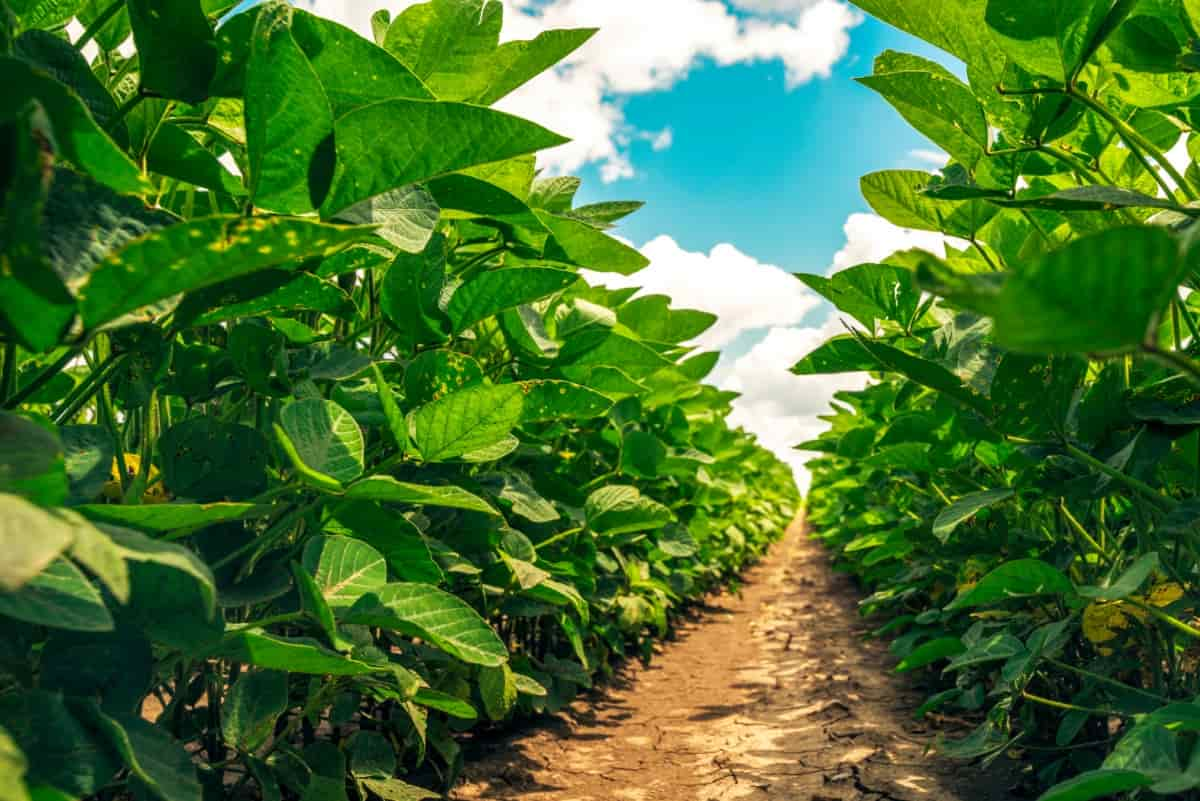With its fertile soils and favorable climate, Nebraska is well-known for its abundant agricultural production. Among the various crops grown in the state, soybeans have become a staple in modern farming systems. This article follows into the process of soybean farming in Nebraska, from seed selection to the final harvest, covering planting seasons, field preparations, and the influence of the state’s climate on soybean farming.

Grow Soybeans in Nebraska
Soybean Planting Season in Nebraska
The soybean planting season in Nebraska typically begins in late April and continues through May. The ideal planting window is influenced by factors such as soil temperature, moisture levels, and weather conditions. Soybeans require a soil temperature of at least 50°F (10°C) to germinate properly. Additionally, planting early within this window has been linked to higher yields, allowing the plants to capitalize on the longer days and warmer temperatures of late spring and early summer.
Field Preparation
A crucial step in soybean farming is preparing the field for planting. This preparation generally begins in the fall, after the previous crop has been harvested. Farmers will often start by testing the soil for nutrient content and pH levels to determine if any amendments are needed to optimize plant growth. Common soil amendments for soybean production include adding lime to balance soil pH and applying fertilizers to provide the necessary nutrients for the crop.
In addition to soil testing, field preparation involves tillage practices to control weeds, break up compaction, and create a suitable seedbed for planting. Various tillage methods may be employed depending on the farmer’s preference and the specific field conditions. These can range from no-till, where the soil is left undisturbed, to more intensive methods such as moldboard plowing or chisel plowing.
Seed Selection
Selecting the appropriate soybean variety is essential for successful soybean farming. With the wide array of seed options available, farmers must carefully consider factors such as maturity group, yield potential, disease resistance, and herbicide tolerance. Choosing a variety with the appropriate maturity group for the region ensures the crop matures and is ready for harvest within the ideal window.
Additionally, selecting a variety with high yield potential, strong disease resistance, and tolerance to herbicides commonly used in the area can help farmers maximize their soybean production. The increased pest and disease resistance and herbicide tolerance of GM soybean cultivars has led to their rapid adoption in recent years. This has allowed for more efficient weed management.
Planting
Once the field is prepared, and the appropriate soybean variety has been selected, it’s time to plant. Planting soybeans in Nebraska typically occurs at a depth of 1 to 1.5 inches, depending on soil type and moisture levels. Poor seed-to-soil contact and low germination rates may come from planting too shallow, whereas delayed emergence and lower yields can be the consequence of planting too deeply.
In case you missed it: How to Start Soybean Farming in Wisconsin: A Step-By-Step Production Guide for Planting to Harvest

Farmers use specialized equipment, such as planters or drills, to place the seeds in the soil at the correct depth and spacing. The ideal seed spacing for soybeans is typically between 2.5 and 3.5 inches apart in 15 to 30 inches wide rows. Proper seed spacing allows optimal plant growth and development, maximizing yield potential.
Nebraska Climate for Soybean Farming
With its warm summers and relatively moderate winters, Nebraska’s climate is well-suited for soybean farming. The state’s average annual precipitation ranges from 20 to 35 inches, with the majority falling during the growing season. This provides adequate moisture for soybean growth, although supplemental irrigation may be necessary in drier regions or during periods of drought.
The state’s relatively long growing season, which usually lasts from late April to early October, allows soybeans to reach maturity and be harvested within the ideal time frame. However, it is not without its challenges. Nebraska’s weather can be quite variable, with the potential for severe storms, hail, drought, and even early frost events. Farmers must remain vigilant and implement appropriate management strategies to mitigate the impacts of these weather events on their soybean crops.
Crop Management
Throughout the growing season, farmers in Nebraska actively manage their soybean fields to ensure the health and productivity of their crops. This involves monitoring for pests and diseases, implementing weed control measures, and providing supplemental irrigation if needed.
Scouting fields regularly for insect pests and diseases is crucial for early detection and timely intervention. Common soybean pests in Nebraska include soybean aphids, bean leaf beetles, and various caterpillar species. Diseases such as soybean cyst nematode, sudden death syndrome, and white mold can significantly threaten soybean crops. If detected, farmers may need to apply pesticides or fungicides to control these pests and diseases.
Weed management is another important aspect of soybean farming, as weeds compete with soybean plants for nutrients, water, and sunlight. Farmers employ various strategies to control weeds, including using herbicides, mechanical cultivation, and planting herbicide-resistant soybean varieties.
Time Taken for Soybean Growth and Harvest
Depending on the cultivar and the growth circumstances, a soybean plant might mature anywhere from 90 days to 150 days. The maturation process is influenced by factors such as temperature, day length, and overall growing conditions. As the plants approach maturity, their leaves will begin to yellow and eventually drop off, signaling that the crop is nearing readiness for harvest.
In case you missed it: How to Start Soybean Farming in Minnesota: A Step-by-Step Production Guide for Planting to Harvest

In Nebraska, soybean harvest usually begins in late September and continues through October, depending on the maturity group of the soybean variety and local weather conditions. Farmers use combine harvesters to collect the mature soybean pods from the plants, separating the beans from the pods and other plant material.
Conclusion
Soybean farming in Nebraska is a complex process that involves careful planning, field preparation, seed selection, and ongoing management throughout the growing season. From seed to harvest, Nebraska farmers work diligently to ensure their soybean crops reach their full potential, contributing to the state’s agricultural economy and providing an essential source of protein and oil for both human and animal consumption. With its favorable climate and productive soils, Nebraska continues to be a leading producer of soybeans in the United States.
- Feed Your Flock for Less: Top 10 Tips to Save on Chicken Feed
- Ultimate Guide to Ossabaw Island Hog: Breeding, Raising, Diet, and Care
- Hatching Answers: The Top 10 Reasons Your Chickens Aren’t Laying Eggs
- Eggs and Economics: Breaking Down the Cost of Raising Backyard Chickens
- Defend Your Greens: Proven Methods to Keep Iguanas Out of Your Garden
- Ultimate Guide to Cinnamon Queen Chicken: A Comprehensive Guide for Beginners
- Ultimate Guide to California Tan Chicken: Breeding, Raising, Diet, Egg-Production and Care
- Ultimate Guide to Marsh Daisy Chicken: Breeding, Raising, Diet, and Care
- 10 Types of Chicken Farming Businesses You Can Start for Profits